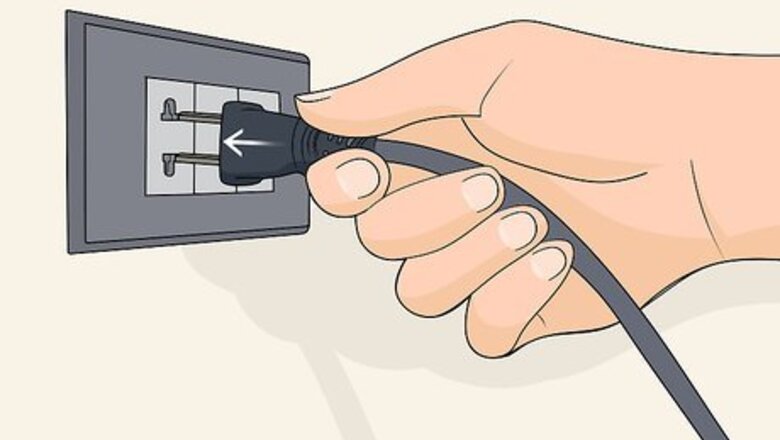
views
- Plug in the washing machine and connect the filling hose to the laundry machine and faucet. Then, hook the machine’s draining hose over the sink.
- Turn on the tap and fill the washing machine about 2/3 of the way full with water. Then, add your detergent and set the machine to “Wash” to mix it in.
- Put your laundry in the basin, and set the wash timer dial to 6-9 minutes for a regular load.
Connecting the Machine
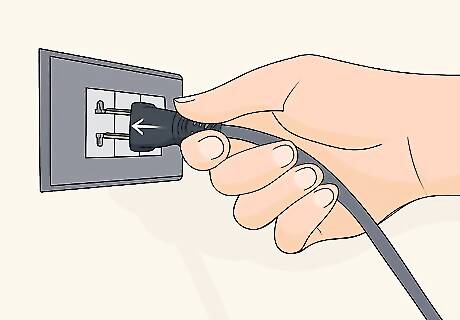
Plug the washing machine into an electrical outlet near any sink. Connect the washing machine’s power cord to an electrical outlet to supply it with power. Make sure the outlet is near a sink so you’ll be able to easily fill the washing machine with water. If you have a laundry area with a laundry sink and an electrical outlet nearby, this is an ideal place to connect your semi automatic washing machine. If not, you can plug it into an outlet near your kitchen sink or in a bathroom.
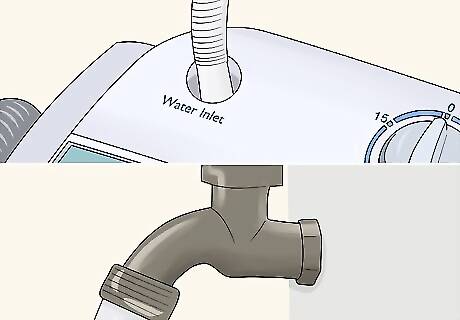
Connect the provided filling hose to the laundry machine and a faucet. The filling hose is straight, flexible hose with a narrow end and a wide end that comes with the semi automatic washing machine. Push the narrow end of the filling hose onto the water inlet on the top of the washing machine near the wash basin, which is the large compartment located on the left side of the machine. Stick the wide end of the filling hose over the tip of the faucet. The filling hose for the washing machine will fit snugly over many standard faucets. However, if it doesn’t fit or won’t stay on securely, you might have to hold it in place under the faucet to fill the machine with water.
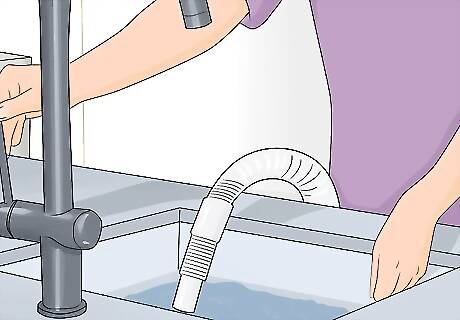
Hook the machine’s draining hose over the sink. The draining hose is another hose that comes attached to the bottom of the machine and has a hooked open end. Take the hooked end with the opening and place it securely over the edge of your sink so that water can drain out of the machine and down the drain.Tip: If the drainage hose is too short to reach your sink, you could also run it into a shower, bathtub, or large bucket to allow the water to drain out. If you’re unable to hook the hose in place over a drain, you will need to hold it in place during the steps that require draining water out of the machine.
Washing Your Laundry

Turn on the tap and fill the washing machine about 2/3 of the way with water. Turn on the tap to the desired temperature of water. Let the faucet run until the wash basin of the machine fills up 2/3 of the way to the top, then turn off the tap. Check the owner’s manual, if you have it, for any specific recommendations about how much water to use for a load of laundry. There may also be markings on the inside of the wash basin. If not, 2/3 of the way full is generally a good amount of water for these types of machines.

Add detergent to the water before you add any clothes. Use any powdered or liquid laundry detergent of your choice. Pour in enough of the detergent for the amount of clothes you plan to wash, according to the instructions on the detergent’s packaging, directly into the water. For example, if you are washing a medium-sized load with a liquid detergent, the manufacturer’s instructions might instruct you to add 1-2 capfuls of the detergent. Powdered detergents usually come with a measuring spoon or cup.
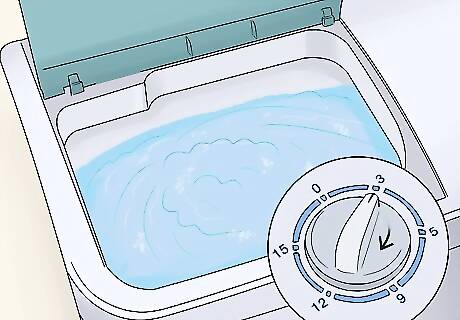
Agitate the water in the wash basin to mix in the detergent. Close the lid of the machine and make sure the machine setting dial is set to “wash.” Turn the machine on using the wash timer button, let it run for 5-10 seconds, then turn the machine off. The exact positions and settings of the different dials on a semi automatic washing machine can vary depending on the model. However, they are typically all located on the top of the machine and are clearly labeled and intuitive to use.
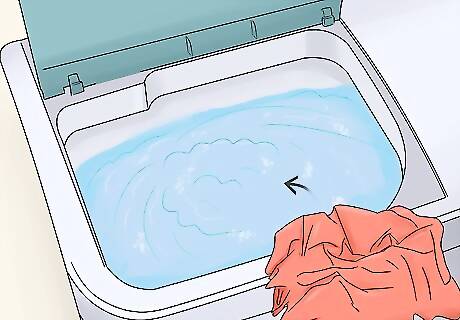
Put your laundry into the filled wash basin. Make sure the weight of the laundry you are adding to wash does not exceed the machine’s capacity. Open up the lid of the washing machine, carefully place the load of laundry into the soapy water, and close the lid. If you aren’t sure how much laundry you can put in the machine per load, check the owner’s manual for specifications about the maximum weight it can wash or look on the machine itself for a weight label. It’s best to put in less laundry than the machine’s maximum capacity for the most effective washing. You can weigh your load of laundry using a scale to make sure it is under the maximum weight, or split a large load into several smaller ones to be safe.
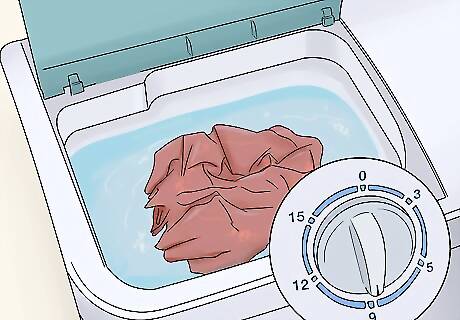
Turn the wash timer dial to 6-9 minutes for a regular load of laundry. Ensure the machine’s setting dial is set to “wash.” Turn the wash timer dial to 6 minutes for a very lightly soiled load and up to 9 minutes if you want a slightly more thorough cleaning. This will start the wash cycle.Tip: Some semi automatic washing machines have different wash settings, such as “normal wash,” “heavy wash,” or “gentle wash.” You can choose a setting that you think is right for the type of laundry you are doing and how dirty it is. If the laundry you are washing is heavily soiled, such as athletic wear covered in dirt and sweat, you might select 10-15 minutes. You generally don’t want to wash anything for less than 6 minutes or it won’t get very clean.
Spinning and Drying Your Laundry
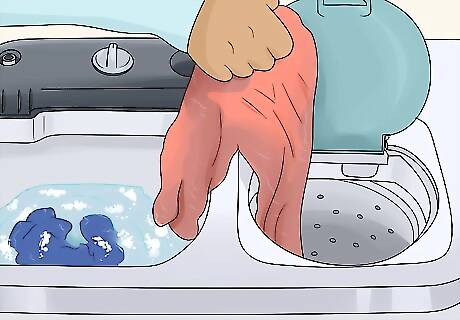
Transfer the laundry from the wash basin to the spin tub. Open the lid of the spin tub, which is the smaller compartment on the right side of the machine, and take off any additional covers underneath the lid so you can access the compartment. Remove each piece of laundry from the water in the wash basin and place them into the spin tub. Replace any covers once the laundry is inside and close the lid. The lids and covers over the spin compartment will vary depending on your washing machine’s model. For example, some have 2 lids on hinges, while others might have 1 top lid on a hinge and a removable cover inside the spin tub, which holds the clothes inside the compartment.
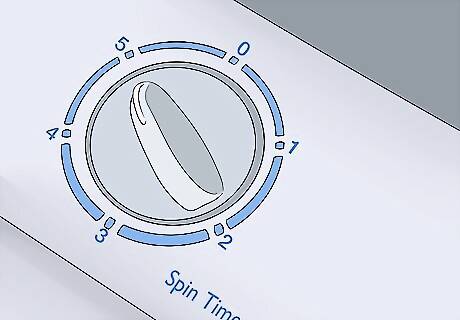
Turn the spin cycle timer to 2-5 minutes. Switch the machine’s setting dial from “wash” to “spin.” Set the spin cycle timer dial located above the spin tub to 2 minutes if all you want to do is rinse the laundry, or 5 minutes if you want to spin dry them as well. Some semi automatic washing machines allow for longer spin cycles, in which case you can turn the spin cycle dial to a higher number to run it longer. If your machine only has a standard 5-minute spin cycle timer, you can also run multiple cycles to spin dry your laundry more.
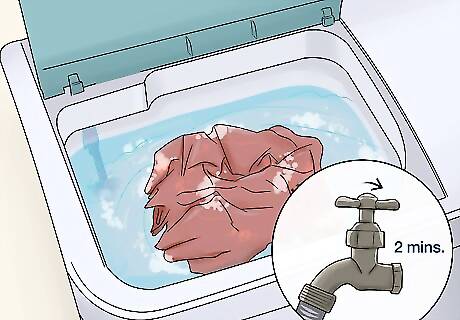
Run the tap for the first 2 minutes of the spin cycle to rinse the laundry. Turn on the cold tap as soon as you start the spin cycle. Let it run for approximately 2 minutes to rinse the laundry with clean water as it starts to spin.Tip: Check if your specific machine has an additional water inlet by the spin tub. Move the filling hose from the wash basin side to the spin tub side before running the tap if this is the case. The water will automatically enter and drain out from the spin tub through the filling and draining hoses.

Hang dry your laundry to finish drying after the spin cycle is complete. Take each piece of laundry out of the spin tub and put them on hangers or a drying rack. Let the laundry air dry until completely dry before you put it away. You could also hang the laundry on a clothesline using clothespins.
Draining and Putting Away the Machine
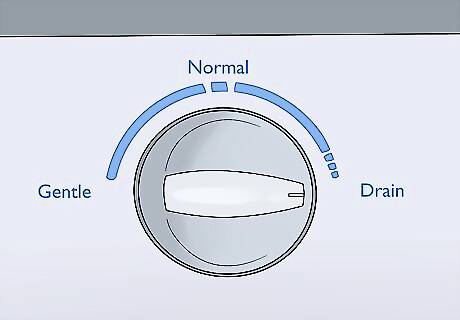
Turn the machine’s setting dial to “drain” to empty the wash basin. Ensure the draining hose is still securely over your sink or aimed at another drain. Switch the setting dial to “drain” and let the machine run until all the dirty water empties out from the wash basin and drains away. Turn the dial back to “wash” when you are finished draining to turn off the machine. You might need to hold the drain hose in place and point it at a drain if you aren’t able to securely hook it in place.
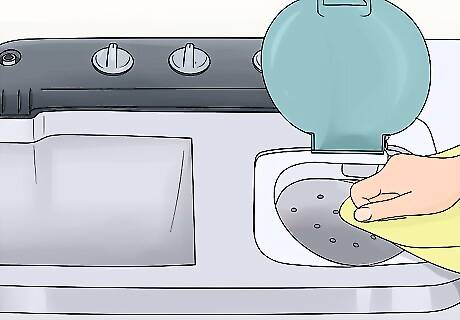
Dry out the machine’s wash basin and spin tub with a towel. Open up both of the washing machine’s compartments. Wipe them out with a dry towel to remove excess moisture before you store the machine. This will ensure that the washing machine is fresh and dry the next time you want to use it.

Disconnect the washing machine and put it away. Pull the filling hose off the faucet and the machine’s water inlet and unhook the draining hose from the sink. Unplug the power cord from the electrical outlet. Store the washing machine somewhere out of the way, such as a closet or other storage space. Standard semi automatic washing machines are about 3 ft (0.91 m) high and some compact models are even smaller, so they require very little storage space.




















Comments
0 comment